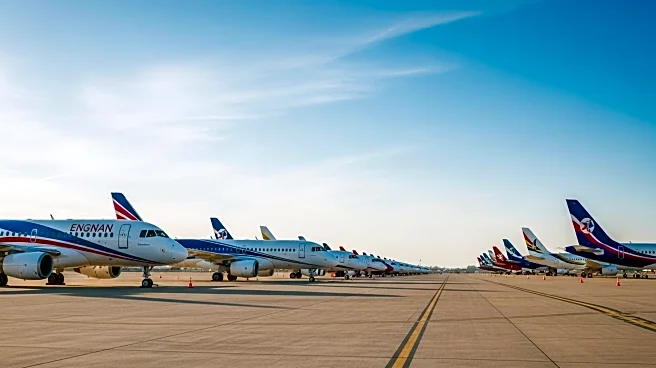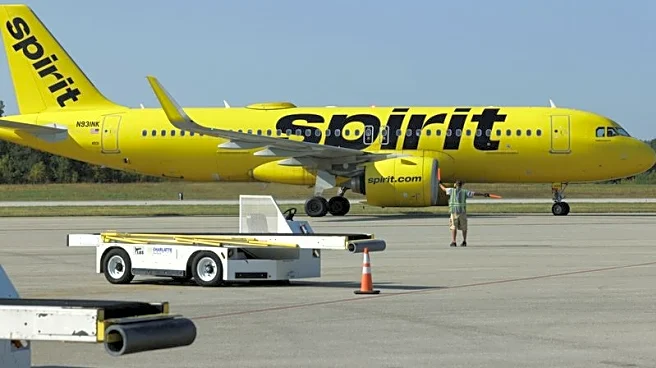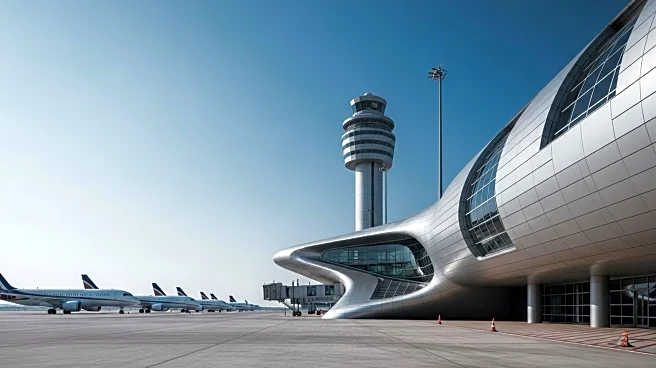What is the story about?
What's Happening?
Spirit Airlines is undergoing a significant restructuring process as part of its Chapter 11 bankruptcy protection. The airline plans to reduce its fleet by nearly 100 aircraft and exit more than a dozen U.S. markets. Currently operating 214 aircraft, Spirit aims to eliminate unprofitable routes and reduce its network footprint, a strategy expected to save hundreds of millions of dollars. CFO Fred Cromer announced these changes during a virtual meeting with creditors, highlighting the financial strain caused by industry overcapacity and low passenger demand.
Why It's Important?
The restructuring of Spirit Airlines is a critical development in the U.S. aviation industry, particularly for low-cost carriers. By reducing its fleet and exiting certain markets, Spirit aims to stabilize its financial situation and emerge as a smaller, more robust airline. This move could impact competition among budget airlines and affect passengers who rely on Spirit for affordable travel options. The airline's decision to reject aircraft leases and terminate airport agreements reflects broader challenges in the industry, including pricing pressures and fluctuating demand.
What's Next?
Spirit Airlines will continue to engage with stakeholders, including lessors, as part of its restructuring efforts. The company has filed a motion to reject additional aircraft leases, subject to court approval. As Spirit navigates its bankruptcy process, the airline's future operations and market presence will depend on successful negotiations and strategic adjustments. The industry will be watching closely to see how Spirit's restructuring influences market dynamics and passenger choices.
AI Generated Content
Do you find this article useful?














